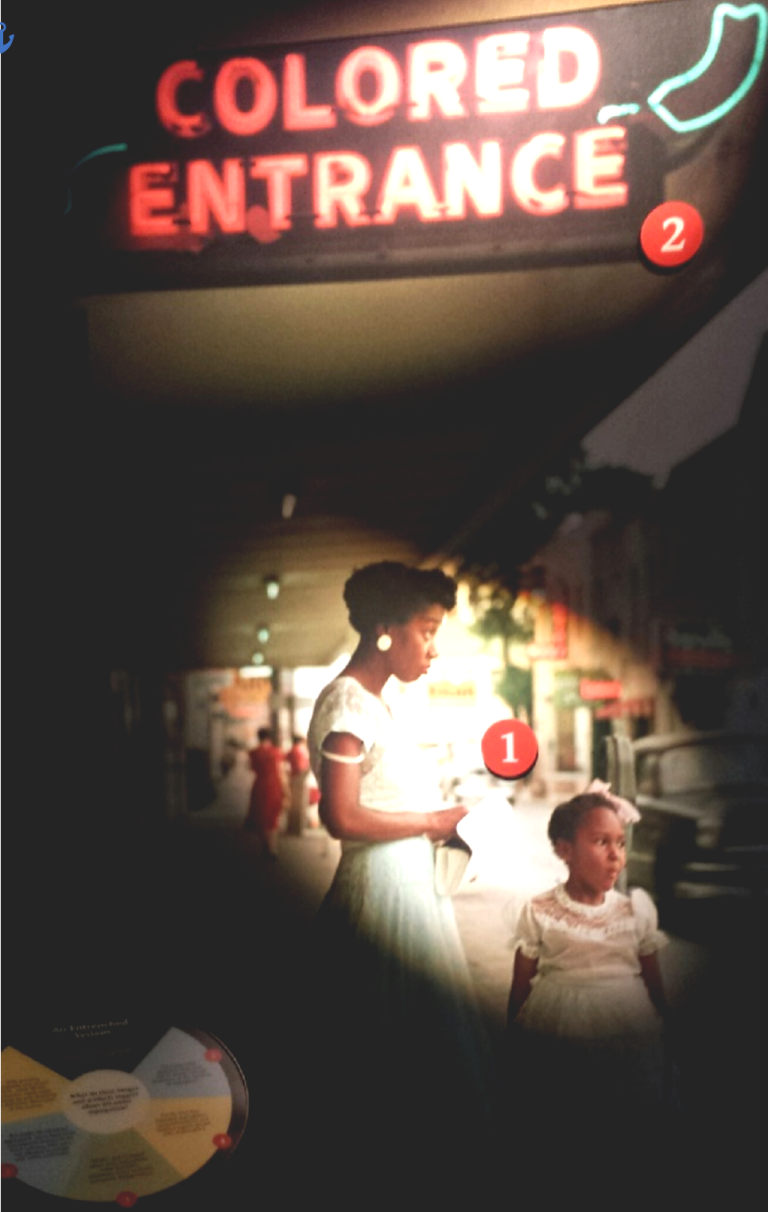The following passages confront problematic installation of a Gordon Parks photo mural in the “Alabama Voices” Exhibit in Alabama Department of Archives and History in Montgomery, Alabama. The original writings and musings’ source material derive from a 2014 assignment in art history course “Race and Art” for which students were challenged to scrutinize wall labels, images, and their implications.
Proposal: The visible bra strap and unwitting, unprepared facial expressions shed the same light on these young African American girls that their racist contemporaries might have seen them in—that is, as unintelligent, uncouth creatures. The accompanying texts, however, elide the brazen white opposition that was so rampant at this time in the south. Though blacks may have had more “leisure time” than in previous years, they nonetheless endured unrelenting hostility, even while partaking in such innocent activities as visiting the movie theater. The caption, indeed, invites the viewer to consider what this image implies about segregated life in Alabama, but it, along with its conflict-absent image, paints a deceptively unperturbed candid that depreciates the horrors African Americans suffered while in the most seemingly enjoyable places.
Explained: The [proposed] wall label challenges the presentation of the image and accompanying texts of “Department Store, Mobile, Alabama, 1956” Conti Street entrance to Saenger Theatre in the Alabama Voices exhibit because, while the exhibit encompassed a vast lot of information about the Native American tribes in Alabama, the events before, during, and after the Civil Rights movement were muffled, if not muted. The above image sat in a dark corner of the exhibit next to an encased Ku Klux Klan robe that was identified simply as the group’s attire—all of which could be (and were) easily overlooked.
The brutal, merciless race-related violence of that time in Alabama is crucial to understanding those events in their entirety, and, having as many landmarks associated with the Civil Rights Movement as Montgomery has, I expected much more attention to be paid to the movement and its harsh realities. The shocking imagery of the riots, boycotts, marches, lynchings, etc., as disturbing as it may be, is vital to comprehending the seriousness of the inhumane actions carried out by many in Alabama and the South as a whole. Unfortunately, the chosen texts, chosen images, and placement of those images within this exhibit combine in such a way that the true widespread terror and hatred of that particular time period are devalued. The exhibit is called Alabama Voices, but not all voices are properly heard.
However, the neighboring Civil Rights Museum adequately expressed, often in great detail, the ferocious opposition minority groups have endured—due not only to race, but also to sexual orientation, religion, and gender—that the Alabama Archives addressed only minimally and briefly. The Civil Rights Museum had disturbing, aggressive murals of one group harassing a minority group, demanding the viewer’s response and engagement, while Alabama Voices exhibited and encouraged a quiet, passive response to the conflicts that were (and still are) prevalent in Alabama.



What an awesome essay Sammie! You write extremely well, indeed!
LikeLiked by 1 person